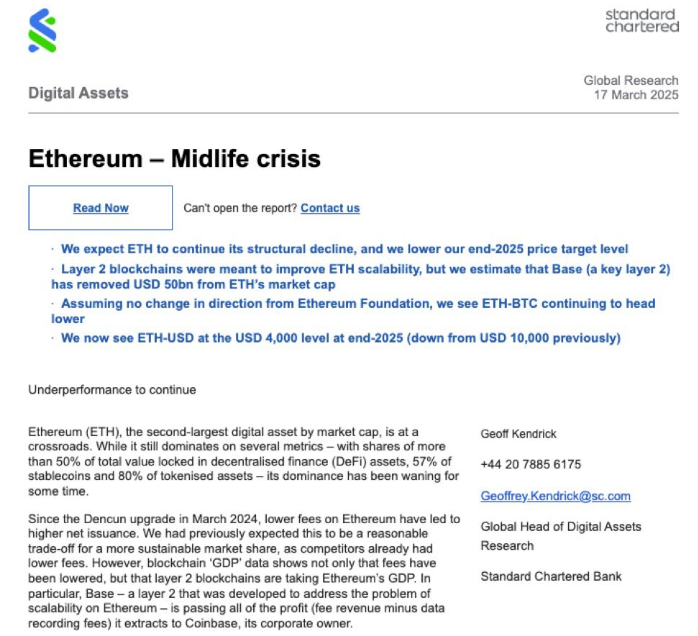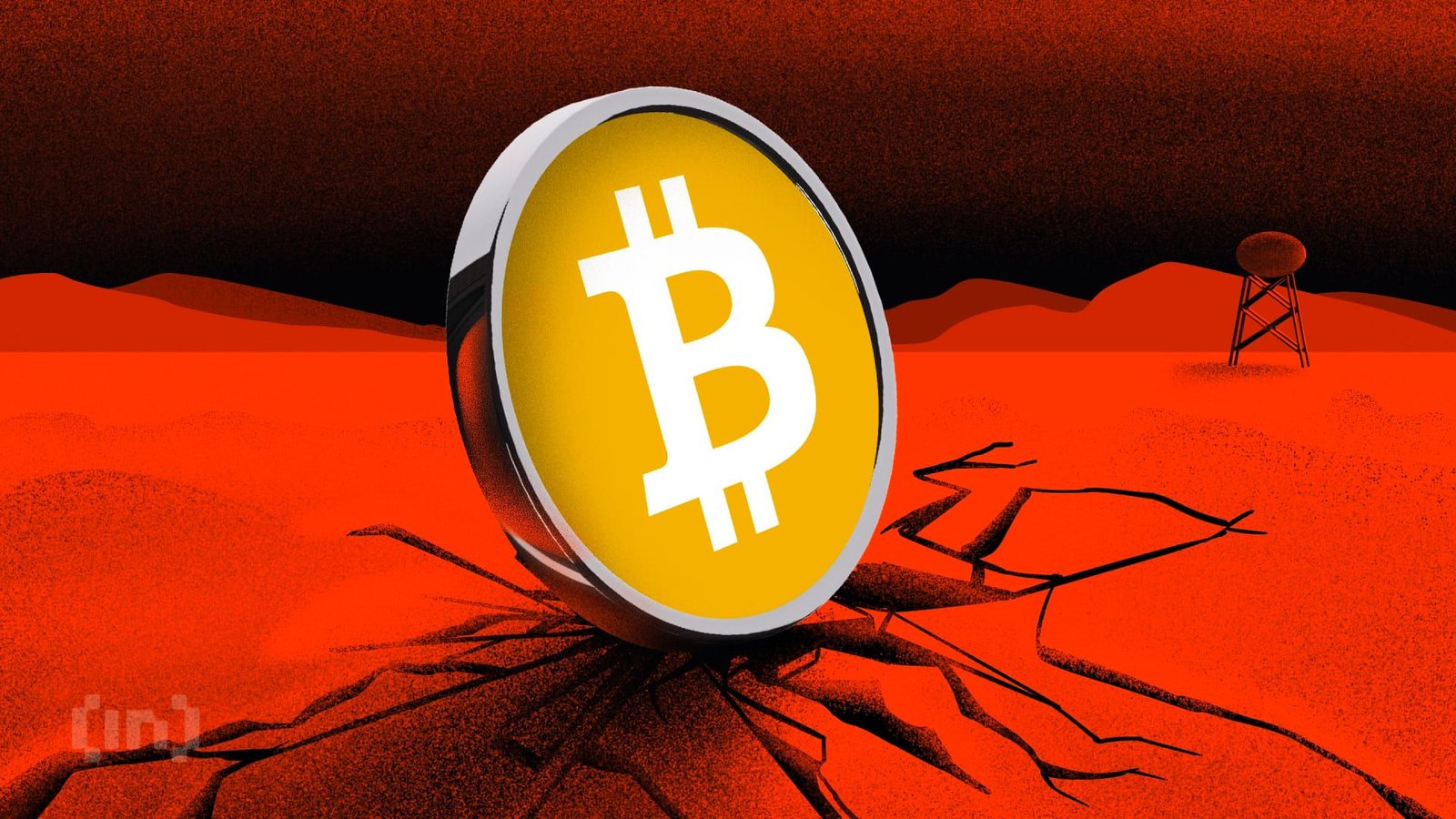Ethereum (ETH) has long been a leader in decentralized finance (DeFi) and smart contracts, but some believe it’s struggling to keep up in today’s fast-changing crypto world. With developer activity declining and rival blockchains like Solana gaining traction, critics are questioning whether Ethereum is falling behind.
Ethereum’s Challenges: Developer Exodus and Price Drop
Ethereum’s price has dropped 44% in 2025, and its network activity fell by 17% last year. Meanwhile, Solana has seen an 83% jump in developer engagement, thanks to faster transactions and the rise of meme coins on its network.
Adding to the concerns, analysts at Standard Chartered recently slashed their end-of-year Ethereum price forecast by 60%, saying Ethereum is going through an “identity crisis.” Some believe the network has lost direction, while others argue it’s simply going through a natural phase of evolution.
Ethereum co-founder Vitalik Buterin has pushed back against the negativity. Instead of chasing hype or political backing, he insists Ethereum’s strength lies in its long-term value and real-world use cases.
“The only thing that can move Ethereum forward at this point is things that give long-term value in a way where you can clearly see that the value is coming from something sustainable,” Buterin told Bloomberg.

Ethereum’s Loyal Supporters See a Turning Point
Despite the criticism, Ethereum’s most devoted supporters remain confident. Many believe the current skepticism is actually a sign that a turnaround is coming.
“This is a bottom signal. Mainstream media almost always get the timing wrong,” one crypto enthusiast posted on X (formerly Twitter).
Ethereum’s Layer-2 (L2) scaling solutions, such as Arbitrum, Optimism, and Polygon, are still leading the way in blockchain activity. Meanwhile, real-world asset (RWA) projects using Ethereum’s technology have been growing rapidly.
For example, the blockchain project Celo recently completed a 20-month transition to Ethereum’s L2 ecosystem to improve transaction efficiency and scalability. Moves like this support Buterin’s view that Ethereum’s real strength comes from improving its infrastructure rather than chasing hype.
Ethereum Has Faced Doubts Before – And Bounced Back
This isn’t the first time Ethereum has been doubted. In 2018, ETH dropped over 90% from its peak, leading many to declare it “dead.” But it made a massive comeback, hitting new all-time highs in 2021.
Similarly, when Ethereum switched from Proof-of-Work to Proof-of-Stake in 2022 (the Merge), there were fears that it would cause instability. Instead, it strengthened the network and reduced energy consumption by 99.95%.
History has shown that Ethereum tends to shine in times of doubt—will it happen again?
Can the Pectra Upgrade Be a Game-Changer?
Ethereum has always relied on major upgrades to stay competitive, and its upcoming Pectra Upgrade could be the next big turning point. This update is expected to improve security, transaction speed, and make development easier for builders on Ethereum.
Although delays have frustrated some in the community, similar upgrades in the past—such as the 2021 London Hard Fork and 2022’s Merge—ultimately helped the network grow.
While meme coin trading and fast transactions have moved to Solana, Ethereum still dominates in key areas like decentralized exchanges (DEXs), institutional-grade financial products, and high-value applications.
The big question now is whether Ethereum’s focus on real-world use cases can help it compete with Bitcoin’s growing political and financial influence.
The Road Ahead for Ethereum
Despite the optimism from its supporters, Ethereum’s price remains down, dropping 2.22% in the last 24 hours to $1,842.
Still, Ethereum has proven time and again that it’s built for the long haul. If the Pectra Upgrade and Layer-2 solutions continue to gain traction, Ethereum may once again prove that its greatest strength isn’t hype—but resilience and innovation.
Do you think Ethereum can make a strong comeback? Let’s discuss!





